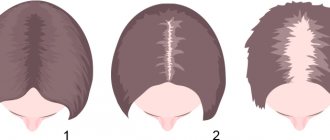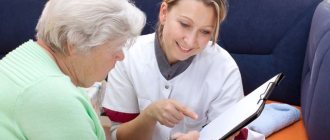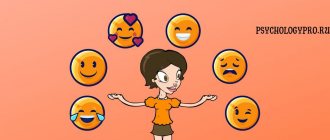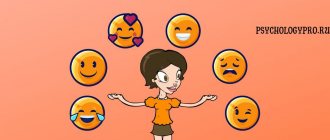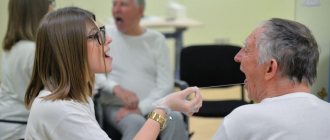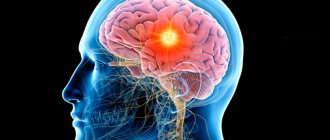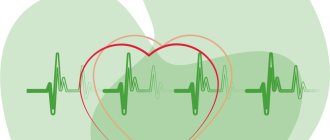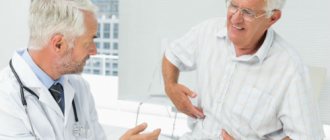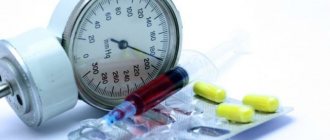Perhaps one of the important means of rehabilitation of children who suffer from cerebral palsy is physical therapy. The goals of exercise therapy for cerebral palsy are to develop the ability to voluntarily inhibit movements, reduce muscle hypertonicity, improve coordination of movements, and increase the range of motion in joints. Also, the tasks of exercise therapy for cerebral palsy include teaching children everyday skills, elements of work processes, and self-care. Thanks to physical therapy classes, the child develops new skills and correct movements.
The method of exercise therapy for cerebral palsy is based on the following principles: regularity, systematicity and continuity of classes, an individual approach, taking into account the stage and severity of the disease, as well as the age and mental development of the child. Increasing physical activity is of no small importance. It must be strictly individual.
The importance of early correctional and educational work in cerebral palsy is determined by the characteristics of the development of the child’s brain, its plasticity and ability to compensate for impaired functions. Early classes should be carried out in very early childhood, the earlier the better, and should help restore impaired functions, because slowing down and distortion of speech lead to a delay in the child’s mental development. Classes conducted with children include articulation gymnastics and speech therapy massage. As for speech therapy massage, it consists of a massage of the facial and articulatory muscles, helps normalize muscle tone and stimulate motor sensations. As a rule, at the end of the first month of a child’s life, the tone of his articulatory muscles increases.
The technique of this massage is as follows: a) Smoothing. Smooth the forehead from the middle to the temples, then from the eyebrows to the scalp, from the earlobes along the cheeks to the wings of the nose, along the upper lip, along the lower lip, etc. b) Relaxation of the tongue. We massage a point in the submandibular fossa and make vibrating movements at the corners of the jaw. c) Relaxation of the oral muscles. Using gentle movements, massage the muscles of the forehead, cheeks, neck, lips and tongue. We stroke the nasolabial folds. d) Relaxation of the neck muscles. We massage the neck and do passive head turns. e) Acupressure for tongue hyperkinesis. We massage the lip area, the lower jaw area and points in the popliteal area.
Articulatory gymnastics uses passive exercises, including stretching the lips, gathering them into a tube, and lowering the lower lip. Therapeutic gymnastics in the first weeks of its implementation should involve the necessary muscles, which will contribute to the correct distribution of muscle tone. Also, the tasks of therapeutic exercises include the correction of incorrect positioning of the neck and limbs. In order to prevent contraction of the iliacus muscle and flexion contracture, the child should be placed on his stomach, while a sandbag should be placed on the pelvic area. Thus, a reflex is developed from the pelvis to the torso, from the head to the torso, as well as a crawling reflex, etc.
Children under two years old are given exercises that help normalize the functioning of the vestibular apparatus. Such exercises include the following movements: lying on your back and on your stomach - raising your head, tilting your torso, etc. The set of exercises also includes walking, during which you need to turn your head, raise your arms up, forward, close your eyes, etc.
INFLUENCE OF EXERCISES ON CHILDREN’S HEALTH
Therapeutic exercise has a positive effect on the body, muscles begin to work, tissues become stronger. During exercise, metabolic processes are regulated, the functioning of the brain and cardiac system improves.
The treatment course for cerebral palsy should include:
- Massage;
- exercise therapy;
- Manual therapy;
- Hardening.
The program is developed for each child on an individual basis. Activities such as: playing with a ball must be present; relaxation exercises; in a sitting and lying position. Stimulating exercises are also carried out.
COMPLEXES OF EXERCISES
Exercise therapy programs for children with cerebral palsy include activities such as:
- Position. Fixing legs and arms in splints;
- Muscle stretching. Swinging of legs and arms with gradual acceleration;
- Muscle relaxation. Fixing the limbs one by one. As a result, the increased tone is weakened and the number of involuntary movements and twitches decreases;
- Walking;
- Flexion and extension of joints with simultaneous muscle massaging;
- Climbing along an inclined surface (instructor helps). The exercise trains the child’s abs and legs and teaches the body well to maintain balance;
- Endurance training.
When diagnosed with spastic diplegia, exercises should be accompanied by continuous movement.
Cerebral palsy is a paralysis of the central nervous system resulting from damage to one or more parts of the brain. The disease can begin to develop during pregnancy, childbirth or newbornhood. With cerebral palsy, muscle tone is impaired, which subsequently leads to the formation of pathological motor reactions, difficulty in maintaining balance and counteracting the force of gravity. In the future, this also leads to the formation of contractures and deformities of the limbs.
Therapeutic physical education for children with cerebral palsy contributes to the development of the child’s abilities to inhibit movements and control them. Exercises improve coordination and increase range of motion.
The main goals and objectives of exercise therapy for children:
· Teaching the child household skills;
· Knowledge of basic work activities for patients;
· Self-care without the help of parents, caregivers, etc.
It is very important that exercise therapy classes begin soon after the birth of the child, with gradual complication. Moreover, classes should be started even if the child does not have signs of cerebral palsy, but has a predisposition to its development.
Exercise therapy is based on a number of principles:
1. Regular and systematic exercise;
2. No long breaks;
3. Gradual increase in physical activity;
4. Lack of orientation towards other patients - only individual methods;
5. Taking into account the stage of development of the disease, the age of the child, his psychological state.
Correctional and educational work is especially important, because it allows you to compensate for impaired functions. Classes are recommended from an early age. Remember - the sooner the better for the child!
Exercise therapy for children with cerebral palsy plays an important role:
· Providing a healing effect on the general condition of the body;
· Promoting the strengthening of tissues and organs in the child’s body;
· Activation of weakened muscles;
· Combating curvature of the spinal column;
· Improving metabolism and other metabolic processes;
· Activation of brain function, acceleration of blood circulation.
Therapeutic exercise is a separate component of an integral complex that can cope with the disease.
What classes does it include?
All exercise therapy complexes for children with cerebral palsy are selected on an individual basis.
It may include the following exercises:
1. For relaxation;
2. To improve dynamics;
3. To stimulate action;
4. Exercises in a lying position, sitting;
5. Game-type activities, etc.
To see results, exercise therapy classes for children with cerebral palsy are recommended to be carried out regularly. And remember, cerebral palsy is not a death sentence!
THE ROLE OF MASSAGE IN MEDICINE
Massage for cerebral palsy in children is used as an assistant, but not the main treatment. This is an important element in exercise therapy for children, helping to normalize blood flow, normalize metabolic processes, and relieve spasms. There are 3 types of massage to treat the musculoskeletal system:
- Classic
- Segmental
- Spot.
After familiarizing yourself with each method in the exercise therapy program, the baby’s parents can do it themselves at home. This massage is also taught in courses.
Basically, there are several manipulations that have a beneficial effect on the child’s body.
- Stroking without interruptions – relaxes the muscles;
- Felting – affects large areas;
- Skating is effective for the hip and shoulder joints;
- Intermittent stroking – maintains tone;
- Rubbing with the “outer” palm – stimulates the muscles on the back, buttocks, and thighs;
- Effleurage.
Exercises to restore dorsiflexion of the foot
Strength 0 – 1 point on the Lovett scale
The exercise is based on balance reflexes. The patient is in a standing position. If only one leg is interested, stand on one leg, holding the handrail with the opposite hand.
The patient leans, or even falls, backwards. An instructor standing behind protects him from a complete fall.
When the exercise is performed correctly, a clear contouring of the extensor digitorum longus tendons is observed on the back of the foot (Fig. 1).
Picture 1
The patient pedals an exercise bike, which promotes passive dorsiflexion of both feet (if necessary, the foot is secured to the pedal with a strap). The degree of weight on the pedals does not matter (Fig. 2).
Figure 2
While kneeling, the patient tilts his torso back, trying to maintain balance, so that the buttocks do not touch the heels (Fig. 3).
Figure 3
Stabilization is achieved by tightening the quadriceps muscles. At the same time, the dorsal flexors of the foot are synergistically tensed (support reaction reflex).
The patient sits on a high couch, so that the lower limbs hang freely and do not touch the support. The feet are shod in sneakers with skis attached to them. A weight is attached to the ski approximately 15 - 20 cm behind the heel.
Figure 4
The patient performs alternating plantar flexion of the feet in the rhythm of walking. In this case, a counterweight attached to the back of the skis, like a pendulum, promotes passive dorsiflexion of the feet (Fig. 4).
Figure 5
Sitting on a chair, the trained leg is straightened at the knee joint, the heel rests on the floor.
The patient leans his torso forward and presses his heel forcefully into the floor, using it as a lever, he bends the lower leg at the knee joint.
This promotes synergistic tension in the dorsiflexors of the foot (Figure 5).
Strength 1 – 2 on the Lovett scale.
The patient sits on a chair, the forefoot is mounted on a spring pedal standing on the floor or on a thick (6-8 cm) piece of foam rubber.
Figure 6
The patient applies active pressure with the forefoot in the direction of plantar flexion (in this case, the heel should in no case be lifted off the plane of the floor.
The exercise promotes synergistic tension in the tibialis anterior and extensor digitorum longus muscles (Fig. 6).
Sitting on a chair opposite the seated instructor, the limb being trained is extended at the knee joint and lies on the doctor’s lap. With one hand, the doctor fixes the heel, and with the other, to stimulate the flexion reflex, he performs maximum dorsiflexion of the foot.
Figure 7
Figure 8
From this position, the patient actively flexes the leg at the knee and hip joint, which promotes dorsiflexion of the foot fixed at the heel due to the synergy of triple shortening (Fig. 7).
The patient sits with his legs crossed “European style”, so that the leg being trained is on top.
From this position, the patient flexes the knee joint, trying to simultaneously dorsiflex the foot (Fig. 8).
The patient tries to maintain balance while standing on the affected leg, trying only in extreme cases to hold on to the handrail.
Figure 9
Balancing on one leg helps activate all the muscles of the lower leg due to balance reflexes (Figure 9).
Strength 2 – 3 on the Lovett scale.
The patient walks on skis with weights attached to them at approximately a distance of 15–20 cm. This promotes dorsiflexion of the foot due to gravity.
Figure 10
It is necessary to pay attention that the patient raises his legs and “walks” on skis, and does not “ride” them (Fig. 10).
Using a soft rubber band, the foot is fixed in a figure eight position in a neutral position between dorsiflexion and plantar flexion.
Figure 11
When walking, this makes it easier to overcome gravity when dorsiflexing the foot (Fig. 11).
A bag of sand or shot is wrapped in a scarf (sports weights can be used). The weight is tied to the lower third of the lower leg, and the section above the ankles. So that it is located above the heel.
When walking, this counterweight helps the dorsiflexion of the foot (Fig. 12).
The patient stands on the “healthy” foot on a flight of stairs or an elevation, holding the handrail with his hand.
The trained leg is stretched down, simulating a descent onto the underlying step (the heel should be lower than the forefoot), but without stepping on it (Fig. 13).
The patient trains in accurately hitting (or hitting) the heel at some target located at some distance from the floor (Fig. 14).
Figure 12
Strength 3 – 4 points on the Lovett scale.
The patient wears shoes with the heels removed so that the forefoot is higher than the rear.
Figure 13
Figure 14
Figure 15
For this purpose, you can use specially modified shoes, the sole of which is wedge-shaped, thicker in the front and thinner in the heel area. Raising the forefoot increases the load on the dorsal flexors (Fig. 15).
The patient exercises the tibialis anterior and extensor digitorum longus muscles by attempting to walk on his heels.
The patient does squats in shoes. For this purpose, it is better to use old sneakers, or soft boots with high lacing, which are nailed to the floor or a solid wooden board, so that the heel does not come off the support.
At the moment of flexion, the dorsal flexors of the foot become very tense.
To practice lifting predominantly the outer edge of the foot, the patient sits on a chair, the sore leg is straightened at the knee joint and abducted at the hip joint, so that the foot rests on its inner edge. The other leg, bent at the knee and hip joints, stands with the entire plane of the sole on the floor.
The patient rotates the torso in the opposite direction, as if turning away from the leg being trained, and at the same time dorsiflexes predominantly the outer edge of the foot.
Figure 16
This exercise is designed to train the extensor digitorum longus (Fig. 16).
Lying on your back, arms clasped behind your head, elbows pointing forward or to the sides, legs slightly bent at the knee and ankle joints, foot at an angle of 90° to the shin.
The methodologist holds the patient by the feet or the feet are fixed with a belt.
Figure 17
The patient moves from the “lying” position to the “sitting” position, which promotes powerful activation of the entire flexion synergy, including the dorsal flexors of the feet (Fig. 17).
Strength 4 – 5 on the Lovett scale.
The patient jogs in heavy boots or sneakers with a lead-weighted forefoot plate.
Figure 18
The patient places a block under the forefoot, the height of which should not exceed 7 - 8 cm (the thicker the block, the greater the load on the muscles of the front surface of the leg) and performs squats, which can be done with a load on the shoulders, for example with a barbell (Fig. . 18).
POOL FOR CHILDREN WITH Cerebral Palsy
Children love water and a baby with cerebral palsy is no exception. Water procedures should not last more than 30 minutes. Muscles do not need overwork. Classes should be regular, preferably on the same day. One-time visits to the pool will not bring any results. All exercises in water are carried out gradually, in combination with other elements.
In any exercise therapy program for children with cerebral palsy, there is a lesson on interaction with water. Tactile sensation is important because babies learn new things.
